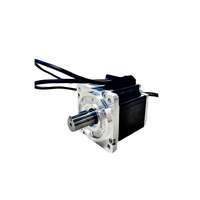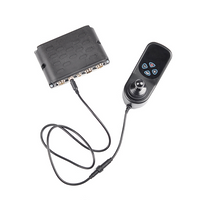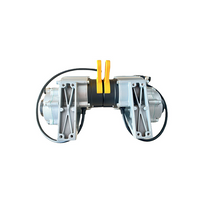- Home
-
- TF Integrated Workstation
- TT Integrated Station
- TS Single-Person Station
- TO Single-Person Station
- Advanced Office Table
- Manager Table
- Odette Conference Table
- Lifting White Board
- Lifting Podium
- Working Port
- Zen Standing Desk
- Lifting Coffee Table
- Home Standing Desk
- Nature Standing Desk
- Invictus Gaming Desk
- Study Desk
-
-
- Electric Hospital Bed
- Image Equipment
- Examination Bed/Clinic Bed
- Operation Table and Chair
- Infant Incubator
- Independent Weighing System
- Home Care Bed
- Patient Lift
- Wheelchair
- Toilet Lift
- Bath Lift
- Shower Trolley
- Smart Rollator Walker
- Ophthalmic Workstation
- Treatment Chair
- Facial Chair
- Traction Table
- Massage Chair
- OT Training Equipment
- Stand-up Application
- Rehabilitation Robot
-
-
- Photovoltaic Application
- Photothermal Application
- Energy Storage Container
- Tractor
- Seeder
- Fertilizer Spreader
- Harvester
- Rotary Cultivator
- Climate Control System
- Automatic Feeding System
- Excavator
- High Altitude Work Platform
- Garbage Truck
- Street Sweeper
- AMR Automated Guided Vehicle (AGV) and Autonomous Mobile Robot (AMR)
- Forklift Accessories
- Palletizing Collaborative Robots
- Packaging Machine
-
-
Wheelchair Motors Overview Guide
Views: 0 Author: Site Editor Publish Time: 2024-05-27 Origin: Site
Wheelchair motors are a crucial component of modern electric wheelchairs, providing the necessary power and control for mobility and independence. These motors convert electrical energy into mechanical motion, enabling wheelchair users to navigate various environments with ease. Understanding the different types and features of wheelchair motors is essential for selecting the right model that meets individual needs and preferences.
Types of Wheelchair Motors
Brushed vs. Brushless Motors
Brushed Motors: Brushed motors are one of the oldest and most common types of electric motors used in wheelchairs. They operate by passing current through brushes that contact a commutator, which in turn generates rotational motion.
Pros:
Simple and robust design
Lower initial cost
Easier to control with simple electronics
Cons:
Higher maintenance due to brush wear
Less efficient than brushless motors
Shorter lifespan
Brushless Motors: Brushless motors, also known as BLDC (Brushless Direct Current) motors, use electronic commutation instead of brushes, which results in higher efficiency and reliability.

Pros:
Longer lifespan due to lack of brushes
Higher efficiency and power output
Lower maintenance requirements
Cons:
More expensive initially
Requires complex electronic controllers
Hub Motors vs. Geared Motors
Hub Motors:
Hub motors are integrated directly into the wheel hub
providing direct drive without the need for additional gears.
Pros:
Compact design
Fewer moving parts, leading to lower maintenance
Efficient power transfer
Cons:
Can be heavier, adding to the overall weight of the wheelchair
Limited torque compared to geared motors
Geared Motors: Geared motors use a gearbox to increase torque output, making them suitable for applications requiring high torque at low speeds.
Pros:
Higher torque, better for rough terrains and inclines
More versatile in performance
Cons:
More complex design with more moving parts
Requires regular maintenance
Direct Drive Motors
Direct Drive Motors: These motors connect directly to the load without gears, providing smooth and precise control.
Pros:
High efficiency and precision
Quiet operation
Minimal maintenance
Cons:
Typically more expensive
Limited torque compared to geared motors
Key Features of Wheelchair Motors
Power and Torque
The power and torque of a wheelchair motor are critical for navigating different terrains and carrying various loads. Motors with higher torque are better suited for rough terrains and inclines, while those with moderate power are sufficient for flat, indoor environments.
Battery Life and Efficiency
Battery life is a crucial factor for electric wheelchairs. Efficient motors consume less power, extending the battery life and allowing for longer travel distances on a single charge. Innovations in battery technology, such as lithium-ion batteries, have significantly improved the range and reliability of electric wheelchairs.
Speed and Control
The speed of a wheelchair motor is typically adjustable to meet the user's needs. Precision in speed control is essential for safe navigation, especially in crowded or tight spaces. Advanced control systems offer smooth acceleration and deceleration, enhancing the user experience.
Noise Levels
Noise levels are an important consideration, especially for indoor use. Modern wheelchair motors are designed to operate quietly, reducing noise pollution and enhancing user comfort.
Benefits of Modern Wheelchair Motors
Enhanced Mobility and Independence
Modern wheelchair motors enable users to navigate various environments independently, improving their quality of life and access to outdoor activities.
Customization and Adaptability
Wheelchair motors can be customized to meet specific user needs, including speed, torque, and control preferences. This adaptability ensures that users can choose a motor that best fits their lifestyle and mobility requirements.
Safety and Reliability
Advanced safety features, such as automatic braking and anti-tip mechanisms, enhance the reliability and safety of electric wheelchairs. Durable construction materials and rigorous testing ensure that these motors can withstand various conditions.
Considerations When Choosing a Wheelchair Motor
User Needs and Preferences
The user's physical condition, strength, and daily usage patterns should guide the selection of a wheelchair motor. For example, users who need to traverse rough terrains will benefit from motors with higher torque and durability.
Environmental Factors
The intended use environment, whether indoor or outdoor, should influence the choice of a motor. Indoor use may prioritize quiet operation and compact design, while outdoor use may require robust and powerful motors.
Budget and Value for Money
While advanced motors may come at a higher initial cost, they often offer better performance, longevity, and lower maintenance, providing better value for money in the long term.
Maintenance and Care of Wheelchair Motors
Routine Maintenance Tips
Regular cleaning and inspection can prevent common issues and extend the lifespan of wheelchair motors. Ensuring that the motor is free from dust and debris and checking for signs of wear and tear are essential maintenance practices.
Troubleshooting Common Issues
Identifying and addressing common motor problems, such as unusual noises or reduced performance, can prevent more significant issues. It is important to refer to the manufacturer's guidelines for troubleshooting and maintenance.
Innovations in Wheelchair Motor Technology
Smart Motors and IoT Integration
Smart motors with IoT integration offer advanced features such as remote monitoring, predictive maintenance, and enhanced user control. These innovations improve the overall user experience and provide valuable data for caregivers and healthcare providers.
Lightweight and Compact Designs
Advances in materials and engineering have led to the development of lighter and more compact motors, enhancing the portability and usability of electric wheelchairs.
Overview of JIECANG
JIECANG is a leading manufacturer of high-quality wheelchair motors, known for their innovation and reliability. Their product range includes a variety of motors designed to meet diverse user needs.
Features of JIECANG Wheelchair Motors
JIECANG wheelchair motors are equipped with advanced features such as high torque, efficient power consumption, and quiet operation. They are designed for durability and ease of use, ensuring that users have a reliable and comfortable experience.
Why Choose JIECANG
JIECANG offers competitive advantages such as excellent customer support, robust warranty programs, and a commitment to innovation. Their motors are rigorously tested to ensure safety and performance, making them a trusted choice for users worldwide.
Conclusion
Summary of Key Points
Choosing the right wheelchair motor is essential for enhancing mobility and independence. Understanding the different types and features of wheelchair motors can help users make informed decisions that meet their specific needs.
When selecting a wheelchair motor, consider factors such as user needs, environmental conditions, and budget. JIECANG wheelchair motors offer a reliable and innovative solution, providing excellent performance and value for money. Explore the range of JIECANG motors to find the perfect fit for your mobility requirements.
Related Articles
QUICK LINKS























